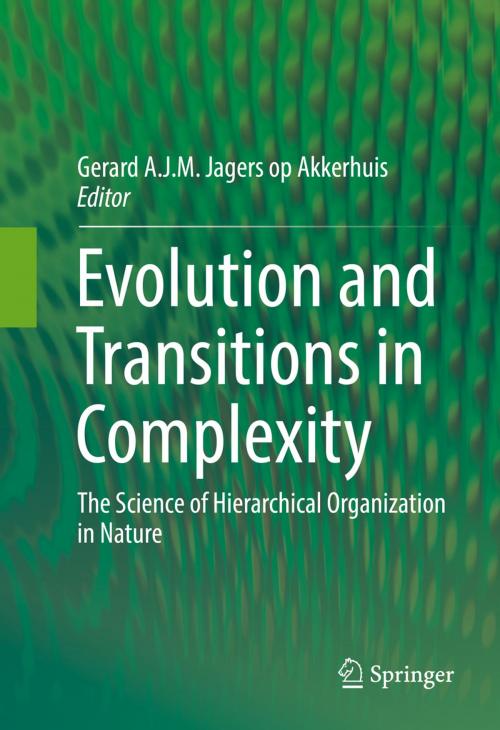Evolution and Transitions in Complexity
The Science of Hierarchical Organization in Nature
Nonfiction, Science & Nature, Science, Biological Sciences, Evolution| Author: | ISBN: | 9783319438023 | |
| Publisher: | Springer International Publishing | Publication: | October 18, 2016 |
| Imprint: | Springer | Language: | English |
| Author: | |
| ISBN: | 9783319438023 |
| Publisher: | Springer International Publishing |
| Publication: | October 18, 2016 |
| Imprint: | Springer |
| Language: | English |
This book discusses several recent theoretic advancements in interdisciplinary and transdisciplinary integration in the field of evolution. While exploring novel views, the text maintains a close link with one of the most broadly held views on evolution, namely that of “Darwinian evolution.”
This work puts forth a new point of view which allows researchers to define in detail the concept of evolution. To create this conceptual definition, the text applies a stringent object-based focus. With this focus, the editor has been able to develop an object-based pattern of evolution at the smallest scale. Subsequently, this smallest scale pattern is used as an innovative basis for generalizations. These generalizations create links between biological Darwinism and generalized Darwinism. The object-based approach that was used to suggest innovations in the field of Darwinian evolution also allowed for contributions to other topics, such as major evolutionary transitions theory, the definition of life and the relationships between evolution, self-organization and thermodynamics.
Together, the chapters of this book and the multidisciplinary reflections and comments of various specialists on these chapters offer an exciting palette of innovative ideas.
This book discusses several recent theoretic advancements in interdisciplinary and transdisciplinary integration in the field of evolution. While exploring novel views, the text maintains a close link with one of the most broadly held views on evolution, namely that of “Darwinian evolution.”
This work puts forth a new point of view which allows researchers to define in detail the concept of evolution. To create this conceptual definition, the text applies a stringent object-based focus. With this focus, the editor has been able to develop an object-based pattern of evolution at the smallest scale. Subsequently, this smallest scale pattern is used as an innovative basis for generalizations. These generalizations create links between biological Darwinism and generalized Darwinism. The object-based approach that was used to suggest innovations in the field of Darwinian evolution also allowed for contributions to other topics, such as major evolutionary transitions theory, the definition of life and the relationships between evolution, self-organization and thermodynamics.
Together, the chapters of this book and the multidisciplinary reflections and comments of various specialists on these chapters offer an exciting palette of innovative ideas.















